Review: Can’t Stop
Publisher: Parker Brothers
Year: 1980
Tagline: HOW FAR CAN YOU PUSH YOUR LUCK?
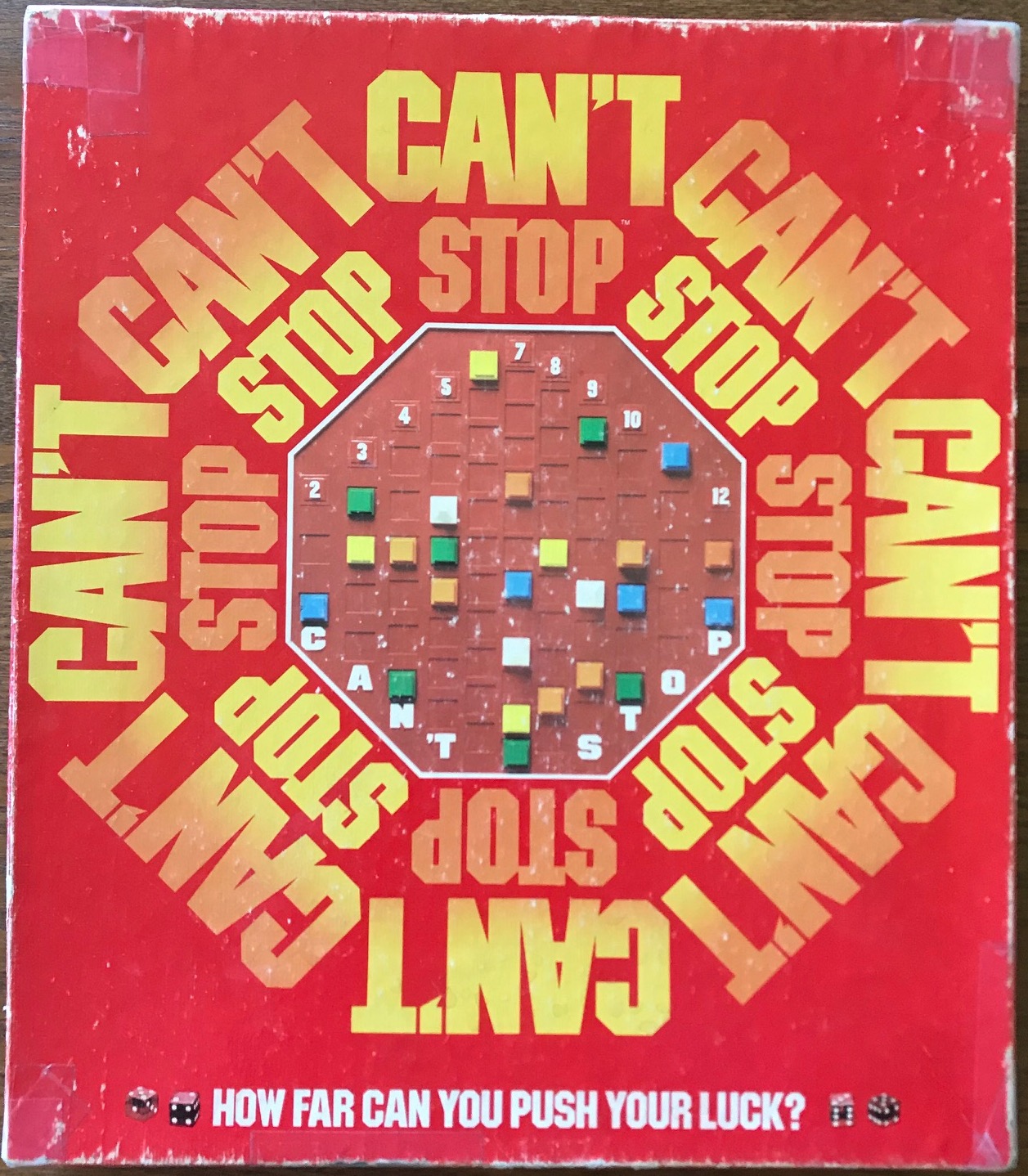
how we met
I don’t remember how I first learned about Can’t Stop. Can’t Stop is one of those classic vintage board games that it seems you are just informed of, maybe in dreams, when you become interested in vintage board games. But I do remember the day I found it for the first time at thrift. A glorious day.
how it plays
Can’t Stop is a press your luck game where your goal is to be the first player to complete three columns of the board. Then you win!
Each player has twelve pieces in their color, one for each number on the board, plus one extra for some reason. (NOTE: the extra pieces are not unique to my copy; every copy I have ever found at thrift includes extra pieces. Only 11 are needed for play, but the 12th does help them look like chocolate bars.)
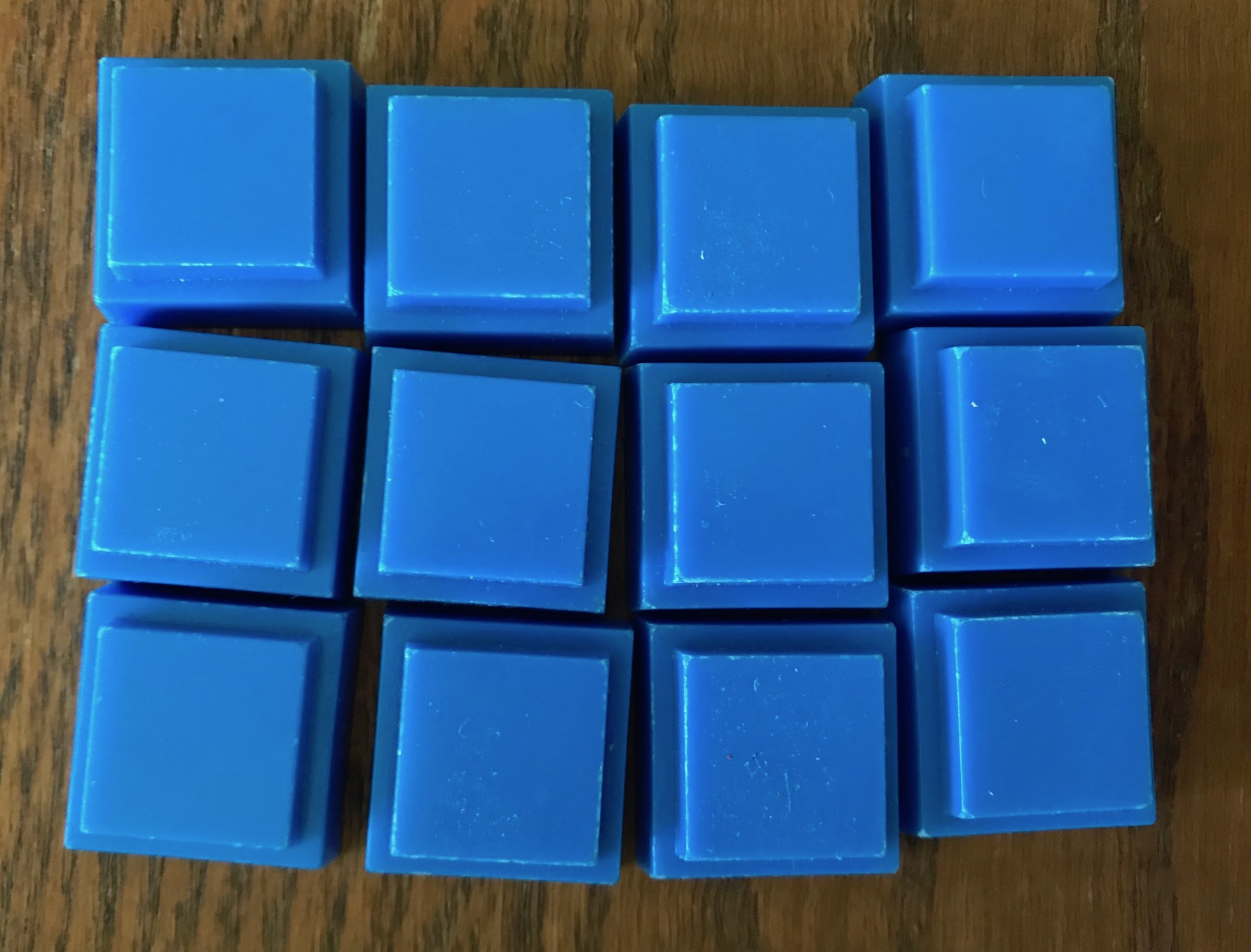
Then the game includes 3 white MARKER pieces. These MARKERs are used to indicate the potential progress you can make that turn. If you decide your turn is over and stop rolling, you replace the white MARKER tokens with your own tokens to lock in your progress. If you keep pressing your luck and then blow it, the white MARKER tokens are removed from the board for the next player to use. And you progress zero spaces.
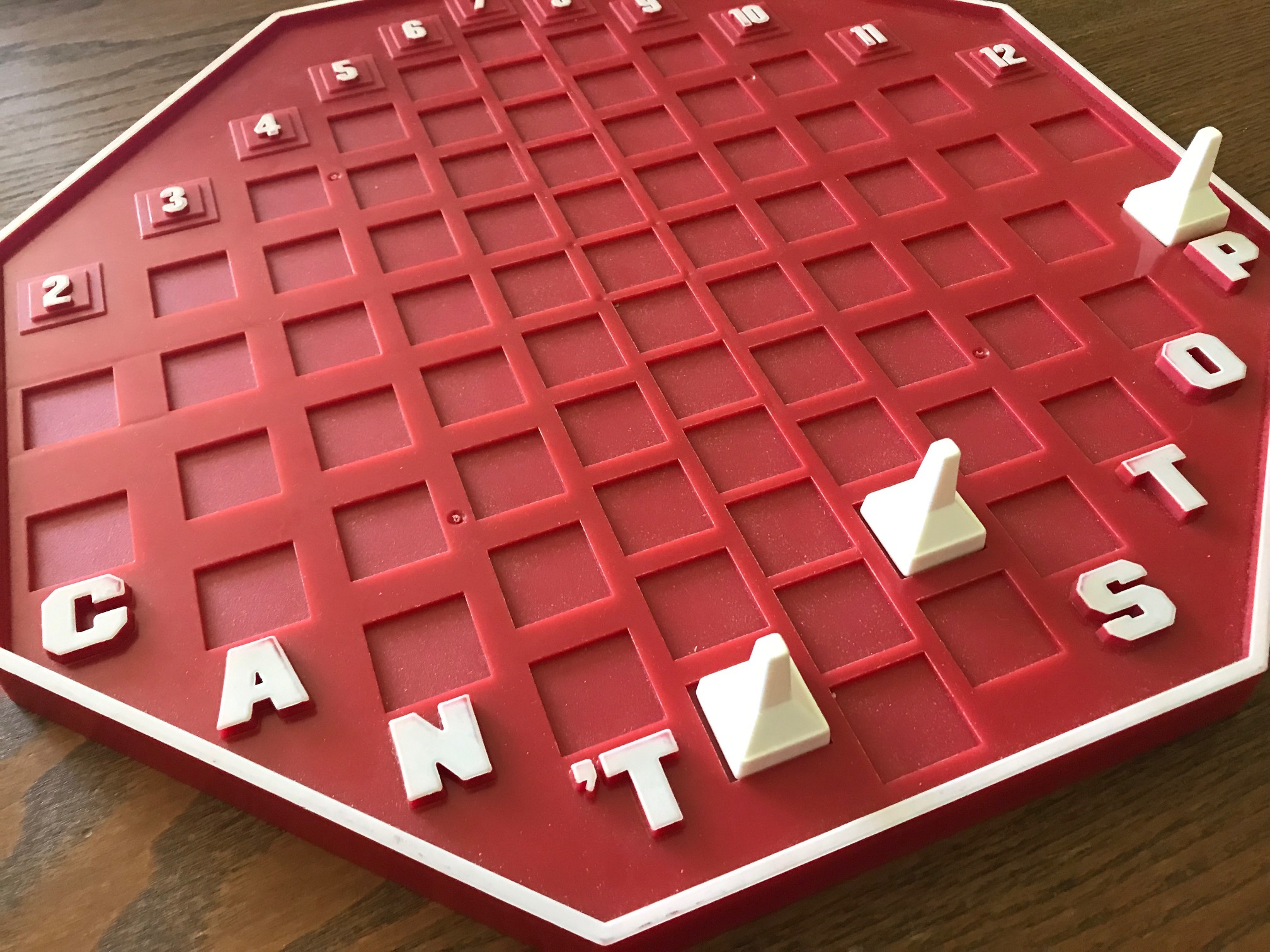
Each player in turn rolls four dice. Then players take any single combination of those dice to make a pair of numbers. These dice rolls determine which columns you get a stab at for that turn. After rolling the dice, players choose two numbers and then place a MARKER on those numbers on the board.
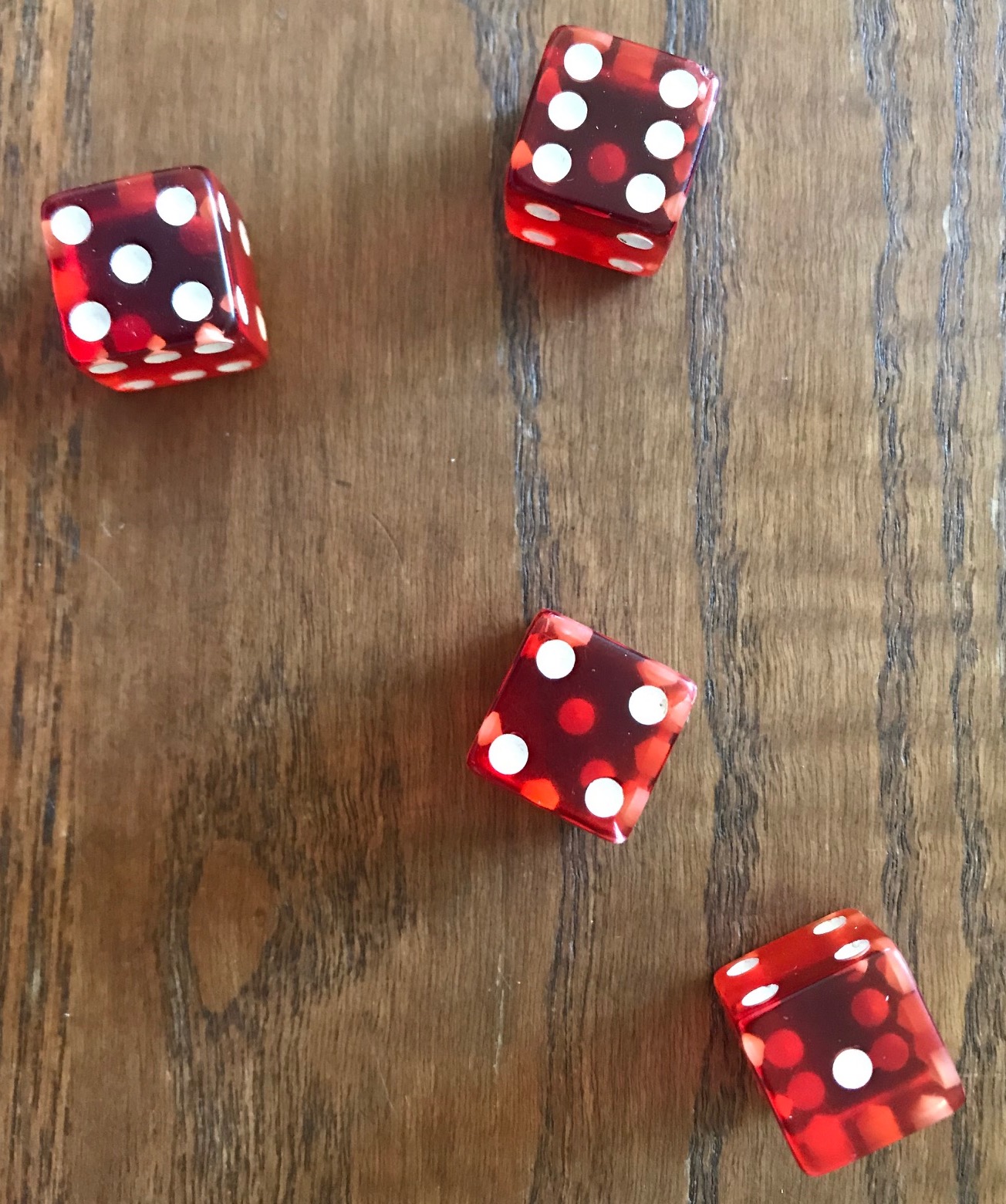
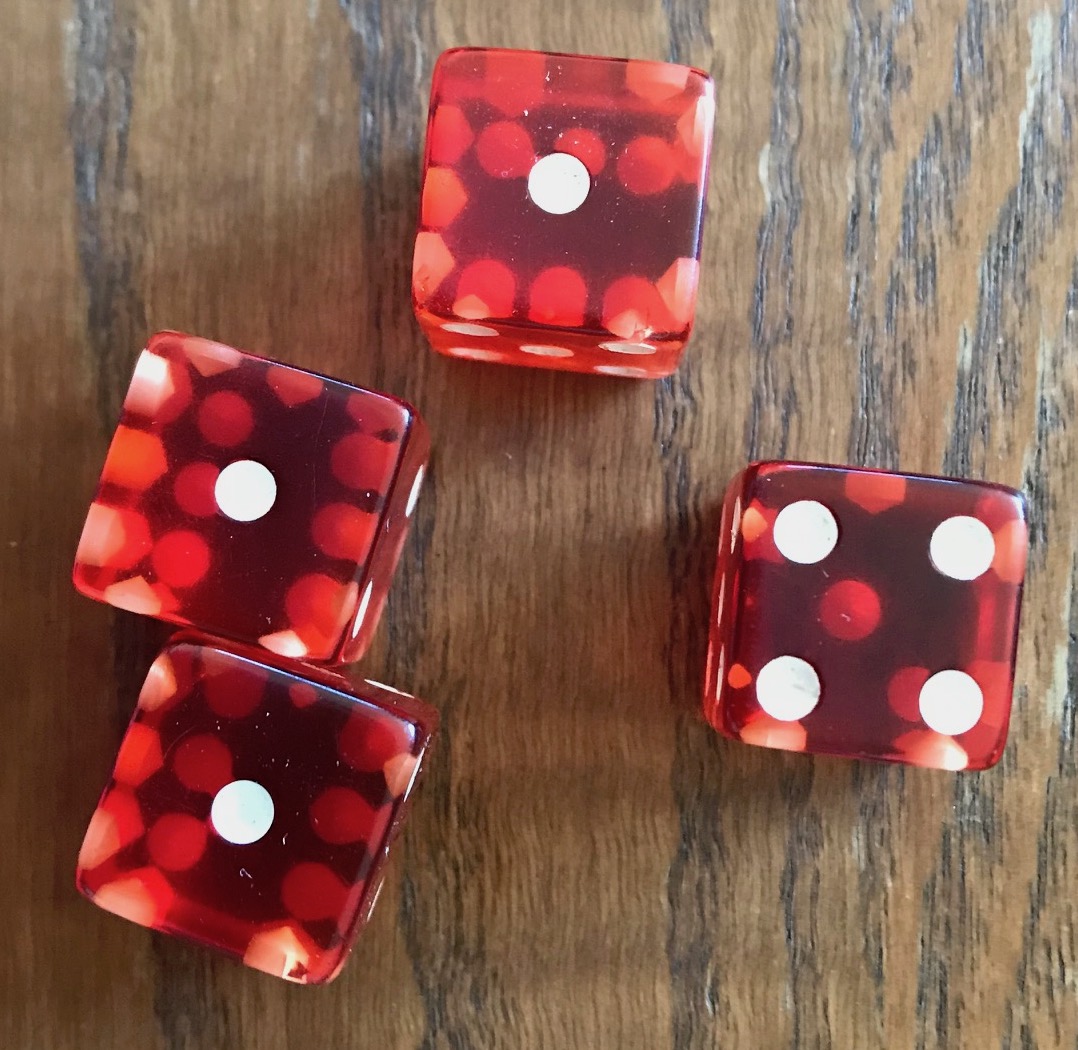
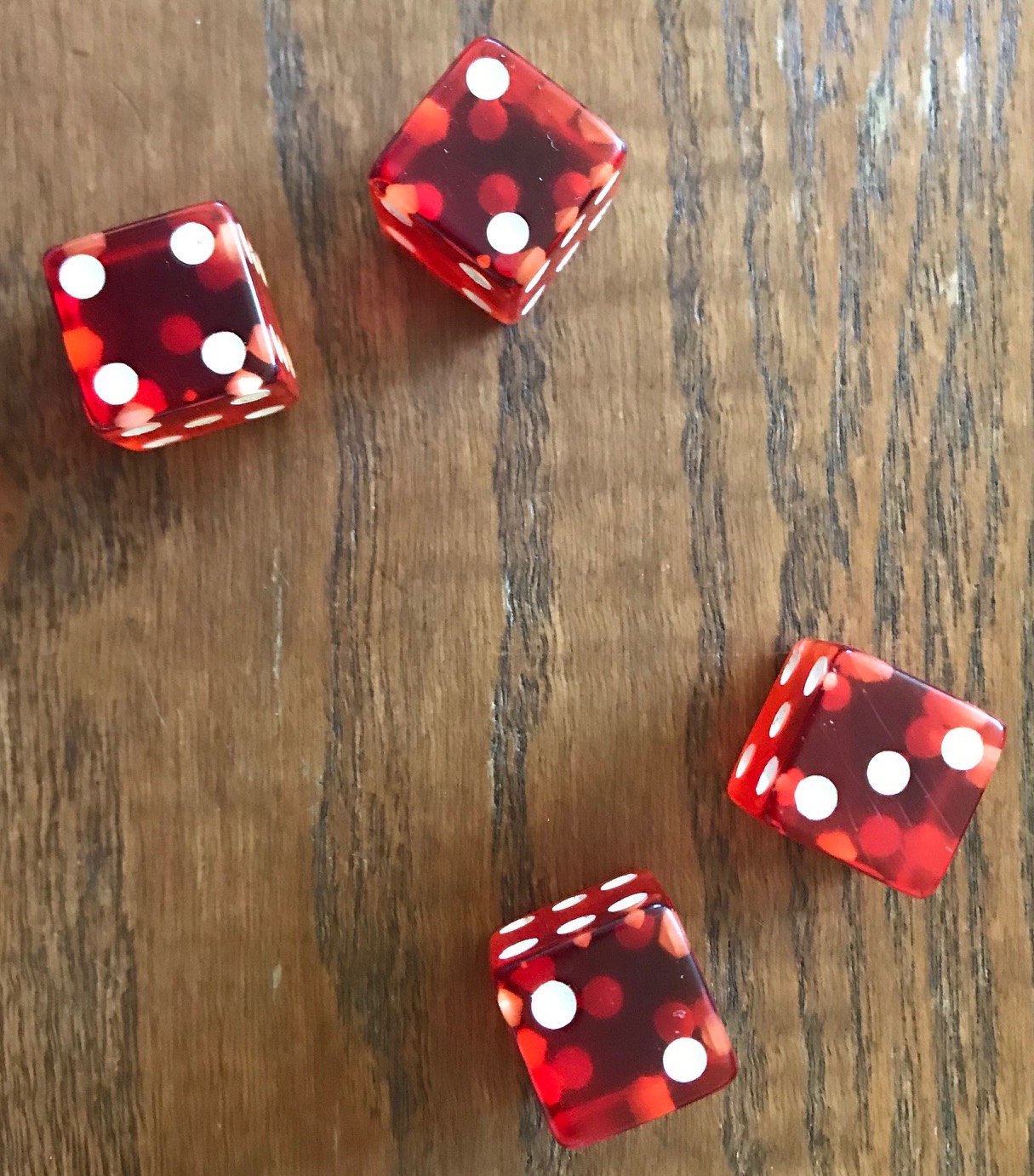
If a player rolls a number (or pair of numbers) where they do not already have a MARKER then they place a MARKER at the start of that column, provided they have a MARKER left. If the player already has a piece in their color on that column, then the MARKER would go one space further.
If a player rolls a number where they already have a MARKER then they are able to move that MARKER up one space. If a player is able to create two of the same number out of the four dice, then they may move the MARKER two spaces even if they are just joining that column.
Key: As long as the player rolls a number where they can either move a MARKER forward or introduce a new MARKER then they are temporarily safe. But MARKERs are not replaced by your color until you decide your turn is over. And you can’t ignore a number if you have a MARKER left.
The object is to capture 3 of the columns by getting a MARKER all the way to the end and safely ending your turn. Once a column is captured, all other colored pieces are removed from it. That column is effectively dead and that number can’t be used by any players. Not even the player that captured it.
And be careful. If you have a MARKER at the end of the column and decide to press your luck, rolling that same number will not keep you safe because there is nowhere left to move. Don’t blow it when you are sitting at the top of a column, like I did!
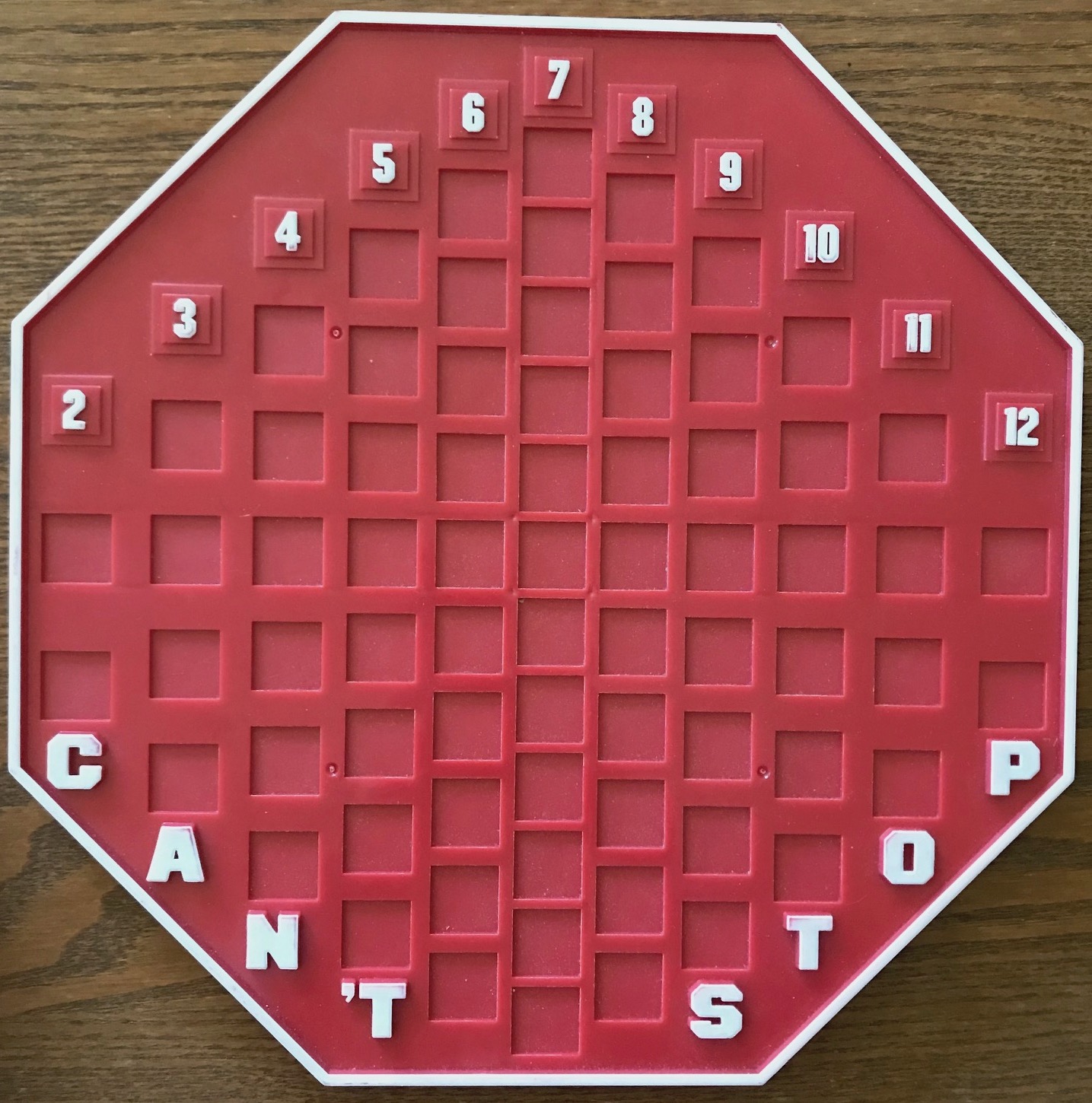
The rules have some ambiguity in them, so be prepared to decide how to approach this issue. It came up during our play and is even mentioned on Can’t Stop’s wikipedia page. The rules say, “If you can place a marker, you must..” but do not say whether this needs to happen before or after deciding how to split your roll. We played it like you have agency to choose the split, but you can never ignore one of your numbers (after the split) as long as you have a MARKER left.
We also played that players can choose a split if it progresses a MARKER where the other number bounces off a closed column. Again, agency in the split and then the outcomes play out. I don’t think it matters too much how you address this ambiguity, just be consistent.
The first player to successfully capture 3 columns wins Can’t Stop!
how it went
It was great, because Can’t Stop is super fun!! I think Can’t Stop is similar to No Respect in that explaining gameplay can take a little bit of time and seem confusing at first, but then it clicks and everyone knows how to play and has fun.
And if Keri is not the most enthusiastic player in Can’t Stop’s history of players, then I would like to see video of these other players. Initially she wanted to press her luck each round, as far as she could. She was playing yellow and it took some time before yellow finally appeared on the board in our first game. She also got a little nasty and kept calling me a “Can Stopper.”
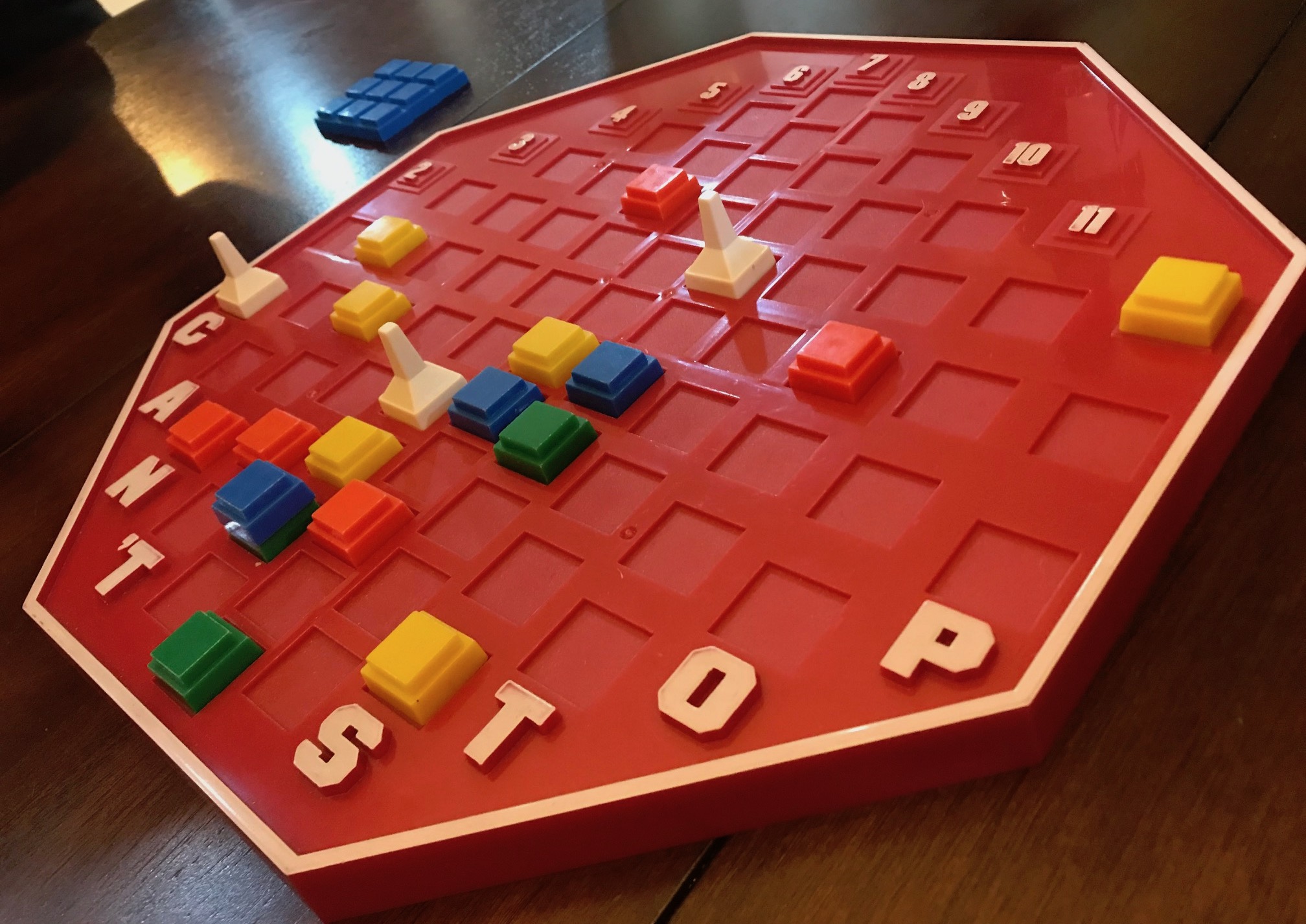
Our players also had different approaches. I feel like both John and I were waiting to see what would happen and where the dice would take us. Bill clearly went for the middle numbers, which have a longer road but are easier to roll. Keri liked the more difficult numbers with shorter paths, like 11, 12, 2, 4, etc. Bill would always encourage players to take 7’s, 6’s, 8’s while Keri would encourage them to “Do it again! One more roll! One more! One more!” each and every time.
FUN FACT: I have played the mobile app version of Can’t Stop approximately 5,000 times but it is no longer available, even to me. BGG user TedMarshall proposes that it was because the game was never ported from 32-bit to 64-bit and is therefore no longer available. 🙁
Our first game went pretty quickly, and I won heartily. But it was more of a teaching play. Sometimes it takes the sting of losing a great round or two in order to find your balance. We wanted to play again, and in our second game Keri ultimately closed some of the weirder numbers along with something like 8, and Keri won Can’t Stop!
play or pass
Play. Cheers to Sid Sackson, this is a great game. Press your luck pure and simple. This might be my favorite implementation of the press your luck mechanic that I have played so far. There is a certainty to it that is lacking in many press your luck games. You will certainly progress, or you will certainly blow it. That makes the decision you make all the more delightful.
If you are interested in Can’t Stop, you can find it at thrift… just not very often. I have found three copies. Can’t Stop has also been reprinted as recently as 2011, but even that version seems to go for a couple of bucks. So just bide your time and keep looking.